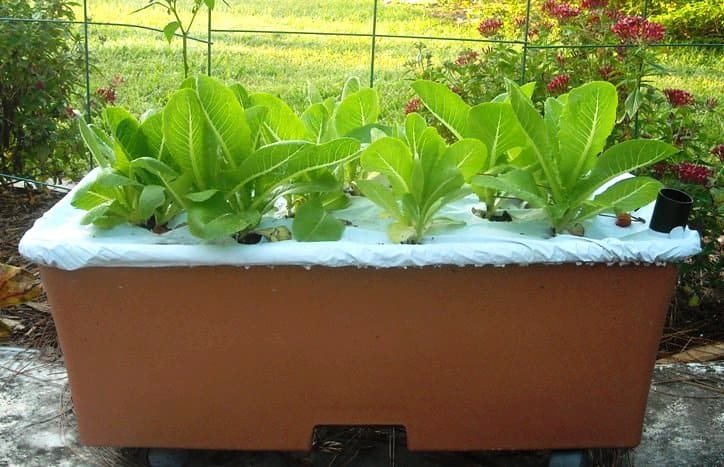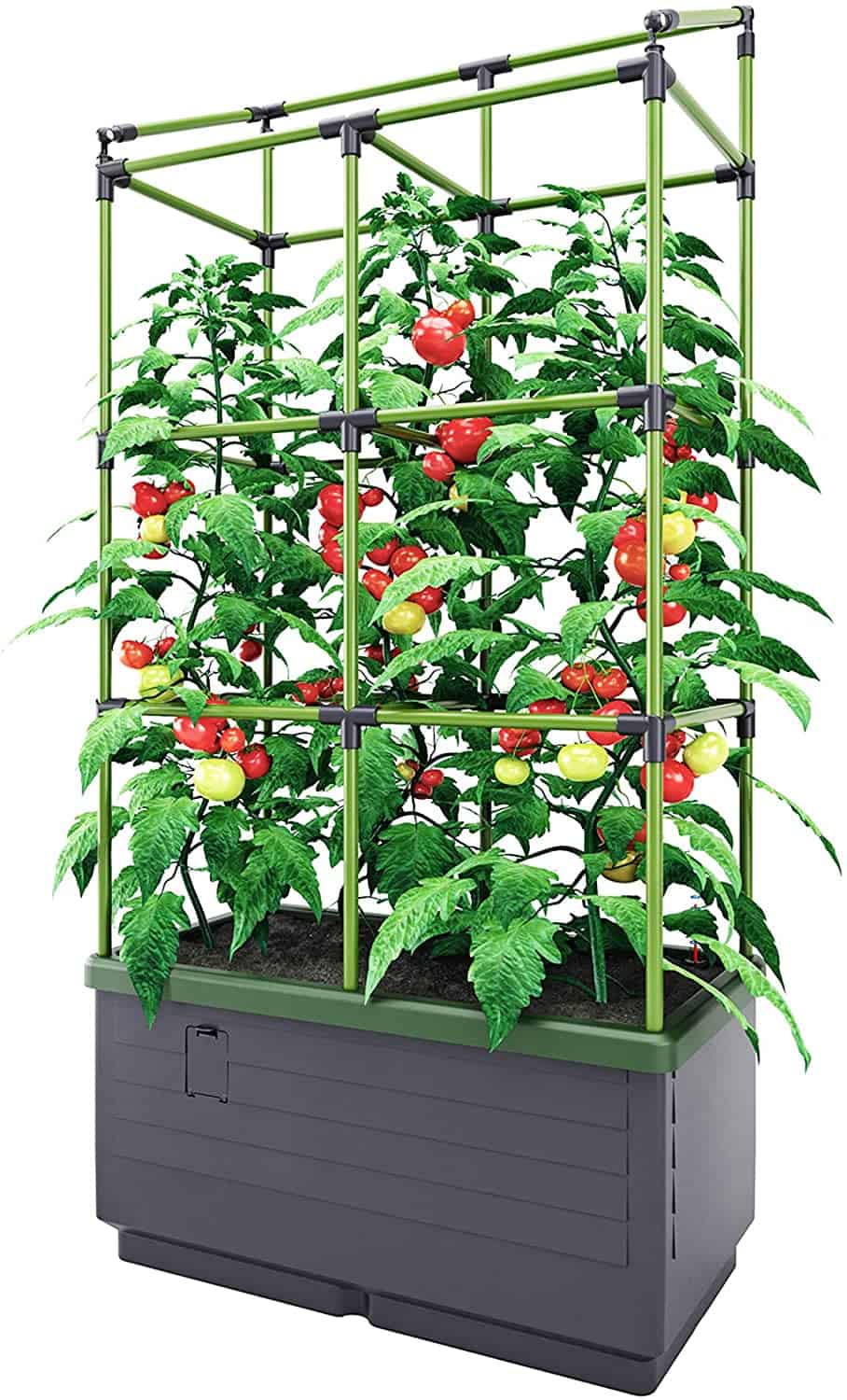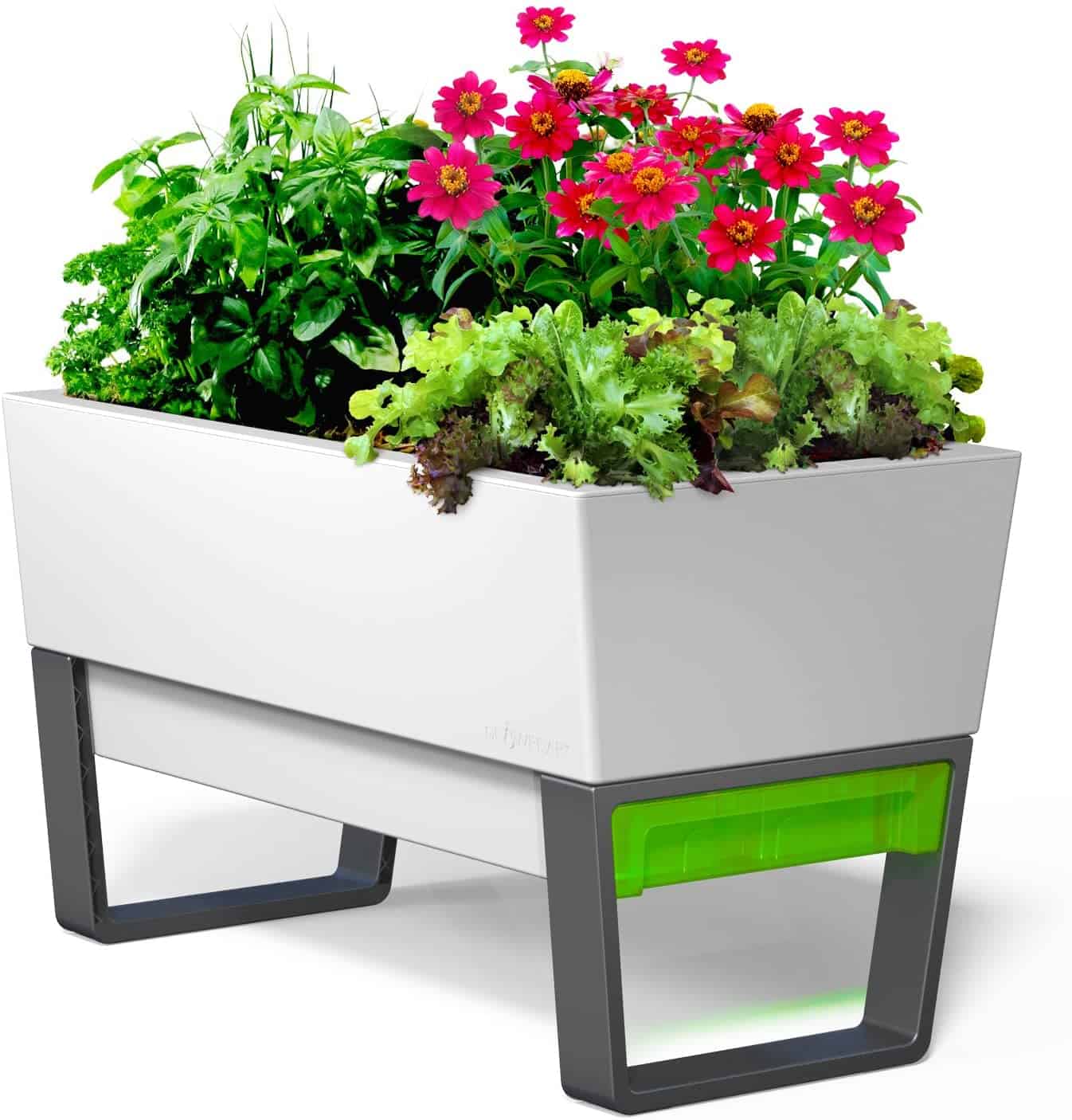Agriculture in the City
In the last few years, I’ve had to adjust to living in town as a college student. People who grew up in “the middle of nowhere” (about 20 minutes to the nearest city) find street lights strange. They see things like pizza delivery and neighbors strange. Majoring in agriculture and not having a yard has been my most significant adjustment. I can dig in the dirt by container gardening. I plant flowers in pots and have a small patio garden with peppers and tomatoes. My concrete patio is about 10′ x 10′, so I couldn’t grow many plants.

Urban Agriculture
Urban agriculture is an example. If you haven’t heard of the term, urban agriculture is growing food within city limits (i.e., not on a rural farm). There are many forms of urban agriculture, including backyard gardening, container gardening, indoor gardening, and even community gardens.
Farmers’ markets and eating locally grown foods have gained popularity in urban agriculture. People living on balconies or patios (like me!) may choose container gardening, while community gardens are viable options for those willing to share the harvest (and work). The local food pantry recently received fresh vegetables from my 4-H club’s community garden. Town support allowed us to use an unused lot and helped with water. Community gardens are practical solutions to overgrown, unused lots and provide fresh produce to food pantries.
Gardening
Container gardening, though, is more challenging. They produce less than a traditional garden but are easy to care for and don’t need weeding! Tomatoes, peppers, lettuce, broccoli, spinach, radishes, and vine plants like cucumbers thrive well in containers. Use a large enough pot. I have my tomato and pepper plants in 12″ pots. This helps avoid root-bound plants. This is when roots can’t grow and spread out. Keep your plants watered and fertilized regularly. Pot plants can’t store water or gain nutrients like plants in the ground.
What is container gardening?
Container gardening involves growing plants in pots, planters, tubs, or half barrels. You can use any container holding some potting soil and a plant. It involves growing plants in anything other than a traditional garden plot.
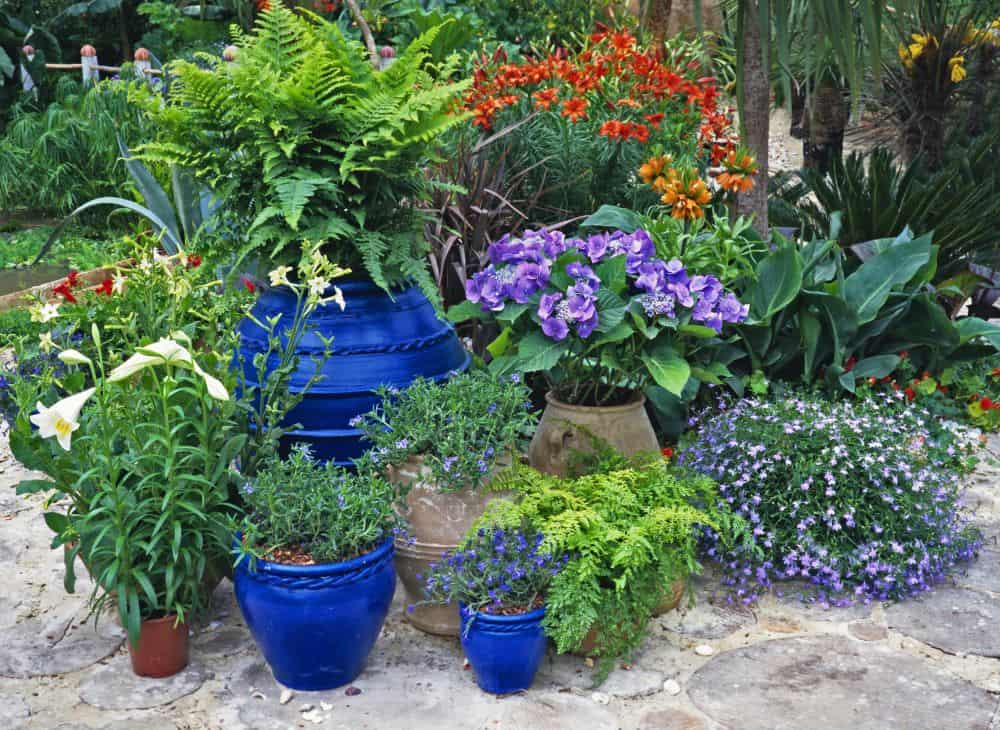 |
| A wide variety of plants can be grown in pots and containers. |
Because of this, container gardening is perfect for beginners. Unless you have a lot of space, you can grow a single tomato or a few herbs.
Can containers be used to grow plants?
Potted plants, vegetables, herbs, succulents, cacti, and even some dwarf trees can be grown in pots. Growing edible plants is the rage right now.
Plants that are edible, like lettuce and spinach, are called nutrient-rich plants. A plant can produce edible fruits and vegetables like tomatoes, zucchini, cucumbers, and melons.
It would be best to choose a container that matches the mature size of the plant you want to grow. For instance, you can’t grow a tomato plant in a coffee can. It will get too big, and the roots need much more room. (Yes, you grow a tomato plant in a coffee can, but the plant will hate you. And you won’t get any tomatoes.) But you grow lettuce in a coffee can.
How can plants grow healthy?
It’s not rocket science to grow edible plants. To produce edible leaves and fruits, plants need the right growing conditions in agriculture.
Veggies and herbs need six or more hours of sunlight a day. One key to success is to place your pots and containers in a warm and sunny spot. Watering cans and hoses are needed to water plants.
Plants need fertile soil or potting mix to grow. Fertilize your garden plants for optimal results. Organic fertilizer is preferred, but chemical fertilizer is also available. Hardware stores, garden centers, and home centers sell these products.
What is the most efficient container?
Traditionally, plants are grown in flower pots. A drainage hole is in the bottom of the terracotta (clay) bowl. They look like this:
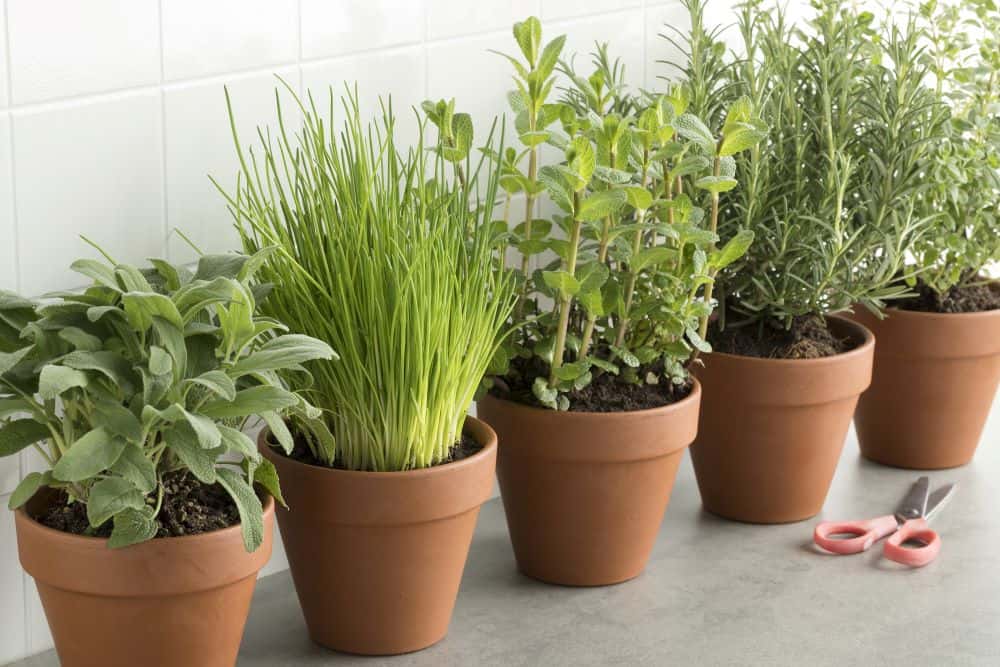 |
|
|
A ceramic pot is more durable and attractive than a traditional clay pot. Sizes range from tiny to enormous, especially in agriculture. Make sure the pot fits your space. It should be large enough for a mature plant (or plants). It must have a drainage hole on the bottom.
Allowing excess water to drain will prevent the plants’ roots from waterlogging. Place a plant saucer under each pot. This will catch the excess water. It will not run over the deck, patio, or balcony.
Because small pots dry out faster, water them more often. Tiny pots are a beginner’s mistake.
A sub-irrigated container is what in agriculture?
Sub-irrigated containers are the newest kind of container. There is a water reservoir at the bottom of a box-shaped device. This is the ultimate high-tech growing container.
“Sub-irrigated containers are my favorite,” said Schultz. “After adding water to the reservoir, the water is naturally drawn into the potting soil to hydrate the roots. Plants stay hydrated this way. You don’t have to water the plant using the water reservoir as often.”
 |
|
|
Not having to water plants frequently is also a big deal. The common mistake beginners make when starting a container garden for agriculture is forgetting to water the plants. Underwatering causes most of the dead plants in container gardens.
Sub-irrigated containers are the most effective in agriculture.
Sub-irrigated planters (also known as self-watering containers) can accommodate large plants. They can hold two full-sized tomato plants or several smaller ones in agriculture.
A self-watering container is brilliant if you are serious about harvesting food from your container garden. I’ve listed three of my favorites below. If you’d like to buy any of these products now, I have included links directly to each on Amazon. As an Amazon Associate, I earn a commission from qualifying purchases on Amazon.com.
A City Jungle with Trellis
City Jungle planters are self-watering containers engineered in Germany. In a slate gray color, they offer a sleek, modern design suitable for any urban setting. Two mature tomato plants can be grown on two square feet. You can also grow peppers, squash, salad greens, herbs, and virtually any plant with them.
The City Jungle trellis fits right onto the container and is designed for growing tomatoes, cucumbers, or any vine plant. After filling the 4.5-gallon reservoir, you won’t have to water your plants for days in most climates. It costs about $100. Get it here.
Planter for urban gardens
The sleek design of the Glowpear Self-Watering Urban Garden Planter fits into any modern room. Its clip-on water drip tray makes it suitable for patios and even indoors.
Since the planter has no trellis, it is not ideal for tomato plants or giant vegetables. Yet it provides a designer-inspired environment for growing salad greens, herbs, and other small plants. The Glowpear Urban Garden Planter costs about $170. Click here to buy.
Organic EarthBox Kit
The EarthBox is a sub-irrigated growing container that provides foolproof vegetable gardening. It was designed by commercial farmers and adopted by gardeners of all levels.
EarthBox Organic Garden Kit includes an EarthBox planter and four caster wheels for easy moving. It also has two reversible mulch covers, organic fertilizer, and an organic dolomite supplement. Green plants look gorgeous anywhere in this kit. Click here for the price.
Which plants should I grow?
Randy Schultz of HomeGardenandHomestead.com suggests growing what you like to eat. “Growing broccoli makes no sense if you hate it.”
Beginners should grow easy-to-grow edible plants, according to Schultz. In this way, you will manage to gain from your efforts.
 |
| Basil is a delightful herb to grow in a container |
The most suitable herbs and vegetables for beginner gardeners are robust and foolproof. Herbs like basil, sage, parsley, and thyme are easy to grow and do not need much space. Additionally, they are easy to grow in containers. Buy starter plants instead of seeds to grow these herbs. Garden centers and plant nurseries carry herb plants.
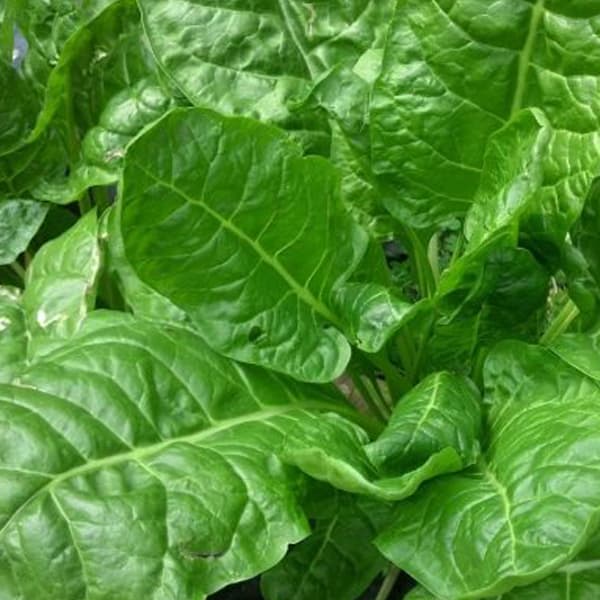 |
| These spinach leaves are ready to pick. |
Greens like lettuce, spinach, and arugula are excellent for beginning gardeners. They are easy to grow from seeds. Follow the seed packet’s instructions. As seeds sprout and small plants emerge, keep the soil moist. Pick off the oldest leaves from these plants so that they can keep growing and producing. Lettuce starter plants are also available. Although they are more expensive than seeds, you will soon harvest edible lettuce from these plants.
For a real treat, grow tomatoes!
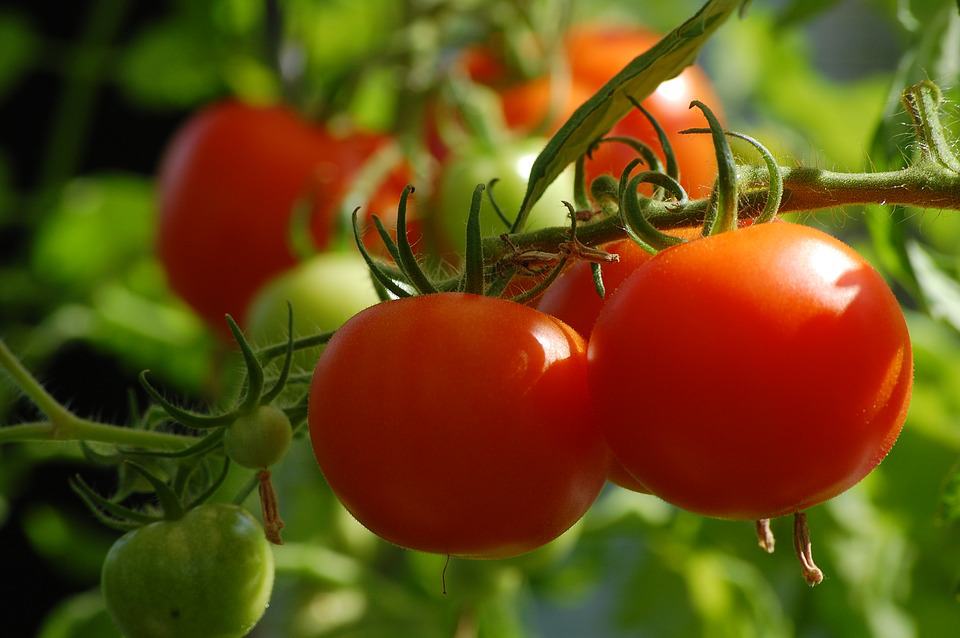 |
| There is nothing quite as delicious as a vine-ripened tomato. |
Tomatoes are the most popular edible plant due to their productivity and ease of cultivation. My favorite part is the taste of homegrown tomatoes. The City Jungle with Trellis or an EarthBox is a large container perfect for growing tomatoes.
Beginning gardeners should buy tomato starter plants because tomatoes need a long growing season. Don’t buy tomato seeds; they’re for experts. Give your tomato starter plants plenty of space. Indeterminate tomato plants keep growing larger. They continue producing tomatoes throughout the growing season.
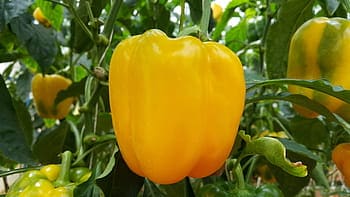
| A yellow bell pepper. |
Beginners can also cultivate peppers, squash, green beans, Swiss chard, cucumbers, and Swiss chard. You can find much information and advice for growing specific types of edible plants online. You can also do a Google search for more information and links to YouTube videos. Try searching for “How to raise kale” or “How to grow tomatoes.”
One final thought about container gardening for beginners
“Don’t be afraid of gardening,” said Randy Schultz. The logical place to start is in a container. Growing vegetables has never been easier. You’ll realize that growing edibles is a skill that will reward you for the rest of your life. This becomes clear once you pick your first ripe tomato or eat your first homegrown lettuce.”








































